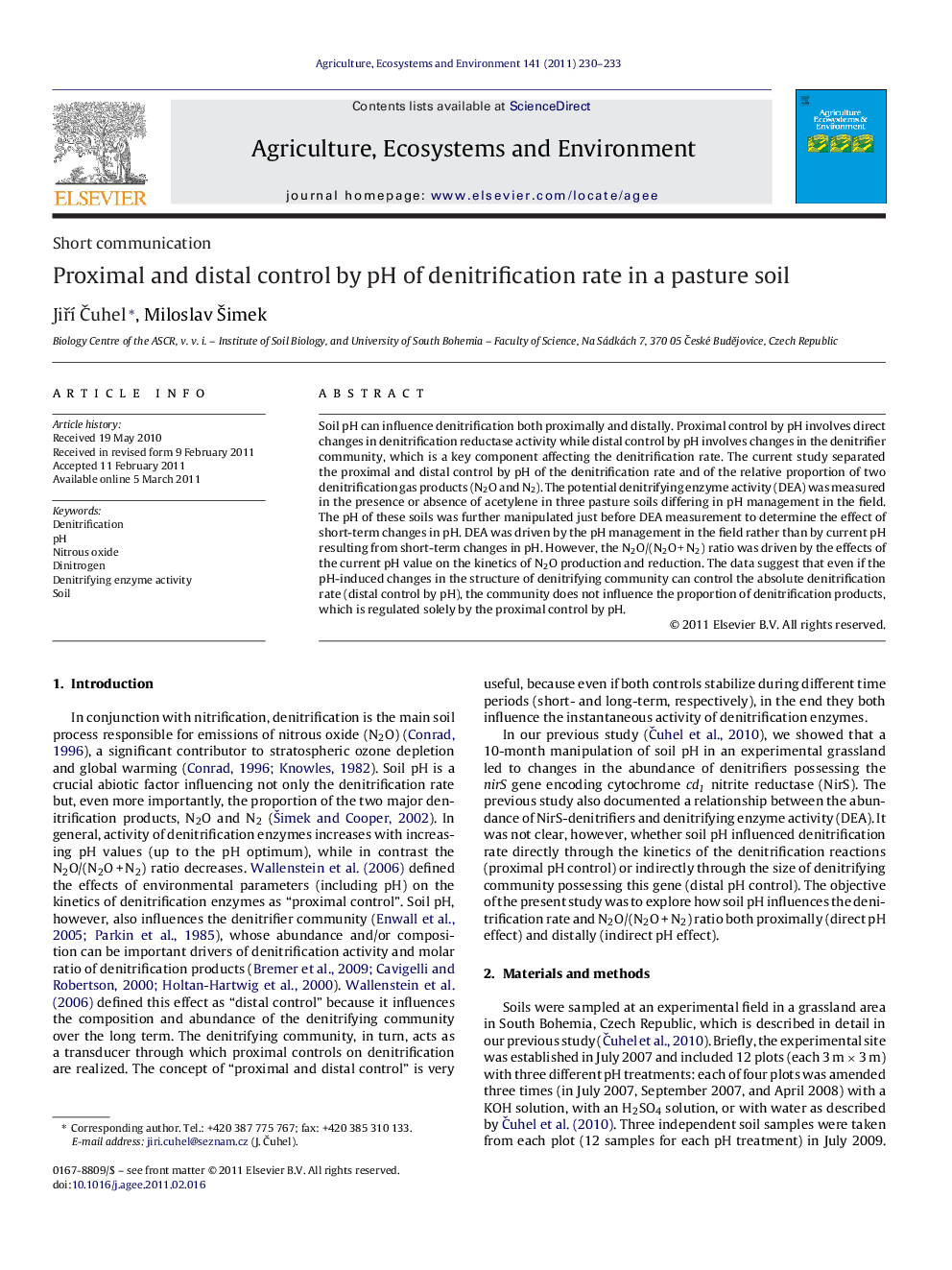| Article ID | Journal | Published Year | Pages | File Type |
|---|---|---|---|---|
| 2414651 | Agriculture, Ecosystems & Environment | 2011 | 4 Pages |
Soil pH can influence denitrification both proximally and distally. Proximal control by pH involves direct changes in denitrification reductase activity while distal control by pH involves changes in the denitrifier community, which is a key component affecting the denitrification rate. The current study separated the proximal and distal control by pH of the denitrification rate and of the relative proportion of two denitrification gas products (N2O and N2). The potential denitrifying enzyme activity (DEA) was measured in the presence or absence of acetylene in three pasture soils differing in pH management in the field. The pH of these soils was further manipulated just before DEA measurement to determine the effect of short-term changes in pH. DEA was driven by the pH management in the field rather than by current pH resulting from short-term changes in pH. However, the N2O/(N2O + N2) ratio was driven by the effects of the current pH value on the kinetics of N2O production and reduction. The data suggest that even if the pH-induced changes in the structure of denitrifying community can control the absolute denitrification rate (distal control by pH), the community does not influence the proportion of denitrification products, which is regulated solely by the proximal control by pH.
Research highlights► Denitrification rate is influenced by pH indirectly, through denitrifier community. ► N2O/(N2O + N2) ratio is affected by the current pH value. ► The denitrifier community, changed by pH, does not influence the N2O/(N2O + N2) ratio.
